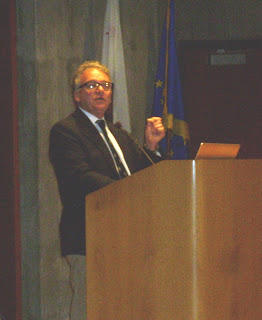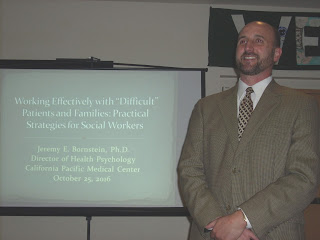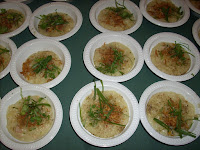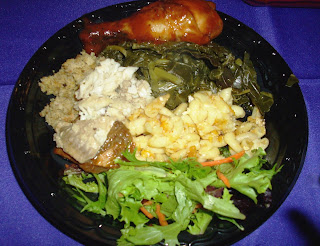Films
Last month’s 6th
Annual Legacy Film Festival on Aging at New People Cinema (which should have been renamed Old People Cinema J) featured diverse themes
centered around The Art of Living (including The Presence Project),
Who Cares? (A Letter From Fred), Deep
Learning (The Family Dog), Generations; Memory; Life, Death and Love; and Gotta Dance! (Hip Hop-eration; check out TEDx talk by this dance troupe’s manager Billie Jordan).
Legacy Film Festival Director
Sheila Malkind, with Board Member Arlene Reiff, announced that Bradford
(England), the world’s first UNESCO City of Film, will
host its inaugural 3-day Golden Years Film Festival – Celebrate Life through Film,
October 3-5, 2016, a free event featuring films from Sheila’s Legacy Film Series!
Panel discussion with Snow Day: Life, Death, and Skiing documentary filmmakers and director Erica Milsom’s parents,
and Wayne
For the past year, I
have joined my friend Jane at free Hollywood movie screenings hosted by AARP’s Movies for Grownups,
which have included Hello My Name Is Doris,
Miles Ahead, My Big Fat Greek Wedding 2, Florence Foster Jenkins,
and The Hollars.
As I prefer documentaries for greater
authenticity, these Hollywood films
featuring older adults seem to target audiences who want to escape reality.
Time
Whenever my employer stresses doing more assessments and
data entry (like bringing out my iPad to type during home visits with clients, which
can be more challenging to maintain eye contact—done more easily when using pen
to paper), I feel like a factory worker in a widget production line. But then my clients appreciatively remind me
that I actually spend more time with them than the average 15 minutes that doctors spend with patients. Administrative work can take more time than
being present for clients/patients. This is a scary thought since the complexity
of my clients’ lives (especially clients with dual diagnoses) demand more time. For example, shorter doctor visits increase the
likelihood that patients leave with a prescription for medication, rather than
for more sustainable behavioral change — like eating more healthy and
exercising. In my work, I help fill the gaps by referring
clients to health promotion resources like tips for home safety, fall
prevention, smoking cessation,
etc. And I am always eager to learn to
be a more effective advocate for my clients.
Food & Addiction
I was mesmerized by many presenters who were as engaging
as the topic of UCSF’s conference, Food & Addiction: Environment, Policy & Individual Factors. Fortunately, the busy doctors gave more than
15 minutes of their time J.
None of the presenting doctors were geriatricians,
but what they had to say applies throughout one’s life course and most of my
clients continue to see their internists.
Elissa Epel, PhD, noted for her research on the role of chronic stress on cellular aging and incorporating behavioral science into UCSF medical school curriculum,
introduced renowned addiction medicine expert Mark S. Gold, MD.
In his presentation, Food
Addiction: How did we get here and where are we going? Dr. Gold, a self-described
“itinerant food addict,” took a life review perspective of his academic
pursuits based on food, “I like French fries, pizza and frozen custard” –
attending Yale School of Medicine in New Haven for Pepe Pizzeria, and
Washington University in St. Louis for Ted Drewe’s frozen custard! Dr. Gold’s
30+ years of addiction research has demonstrated similarities in the effects of drugs (tobacco, cocaine,
opiates) and certain foods (fast food, sugar) on the brain and behavior. Based on successful treatment of addictions to
drugs, Dr. Gold is researching treatments for food addictions and hyperphagia.
Drs. Dean Schillinger and Robert Lustig,
sample paleo-friendly, gluten-free muffins from Muffin Revolution.
Laura Schmidt, PhD, chaired session on Preventing Food Addiction in Vulnerable Populations, with George W.
Albee’s prevention is better (than treatment) quote on screen: “No
epidemic has ever been resolved by
paying attention to the treatment of
the affected individual.” Schmidt’s view is that addictive substances,
like sugar, should be regulated through taxation and limits
on marketing and access.
Dr. Schillinger, founder of UCSF Center for Vulnerable Populations, talked
about his work with Youth Speaks through The Bigger Picture to combat the rising epidemic of type 2 diabetes (formerly known as adult-onset
diabetes, but increasing in younger people). He showed spoken word video, Death Recipe,
by San Francisco
We eat like we still slaves
Cause back in the days we got what whites didn’t want
And now we got something called freedom of eat
But granny still chooses salt covered pigs feet
And mama still chooses KFC
And I still choose whatever is given to me …
Cause back in the days we got what whites didn’t want
And now we got something called freedom of eat
But granny still chooses salt covered pigs feet
And mama still chooses KFC
And I still choose whatever is given to me …
(I thought about the 64-year-old grandmother who filed $20 million suit against KFC for false advertising because she paid $20 expecting
bucket overflowing with chicken to feed the whole family, but only got ½ bucket;
and KFC “helping” to fight breast cancer with pink buckets.)
Nancy Adler, PhD, founder of UCSF’s Center for Health and
Community,
and Robert Lustig, MD, UCSF Professor of Pediatrics and President of the Institute for Responsible Nutrition, with power point summary of his What’s the real addiction? presentation
on screen: “The only items in 'junk' food that are addictive are sugar and
caffeine; but they are really food additives.”
[In Sugar: The Bitter Truth (2009),
Dr. Lustig talked about turning around 40
years of mainstream nutrition belief that blamed fat v. sugar for dis-ease. He declared sugar is toxic like alcohol and tobacco,
urging us to reduce sugar consumption for public health.]
Last
month, UCSF researchers Stanton Glantz, Cristin Kearns and Schmidt published an
article in JAMA Internal Medicine about the sugar
industry paying Harvard scientists to blame fat and cholesterol as dietary
causes of coronary heart disease, while downplaying evidence that sugar
consumption was a risk factor, about 50 years ago. This resulted in misleading a generation of
baby boomers who counted calories (though all calories aren’t equal, according
to Dr. Lustig), gave up eating saturated fats like butter (in favor of trans fat margarine or low-fat) and cholesterol-rich egg yolks (in favor of
whites only). Just as there should be more
geriatric training among doctors,
reliable and accurate nutrition science training is needed to promote healthy aging!
Communication
At Jewish Home, CPMC psychologist Jeremy Bornstein presented Effective Healthcare
Communication with Difficult Patients and Families. Key points:
- “Difficult” is subjective
assessment when one’s perceived skill is not up to challenge
- “Difficult” is manageable by
acknowledging level of challenge and looking for ways to increase skill
- Get behind “difficult”
behavior (e.g., aggressive, depressed, anxious) and address emotional
needs with support, education and mental health resources
- Develop rapport to understand
underlying values, beliefs, goals and expectations
He reminded us of the Talmudic quote, “We don't see things as they are, we see them as we are.”
Eating for Health
UCSF rheumatologist Cristina Lanata, MD, presented Update in Lupus Research at Lupus of Northern California’s Fall Conference. Almost 2 million Americans suffer from
lupus—more prevalent than AIDS, cerebral palsy, multiple sclerosis, sickle-cell
anemia and cystic fibrosis combined.
Lupus mostly affects women, and is more common among women of
African-American descent. (However, late-onset lupus after age 55 is more common among Caucasians.) While
40% of lupus is transmitted genetically, the actual expression of genes is
based on epigenetics or life-course exposures to external and internal stimuli.
Exposures to smoking, asbestos and nail polish were associated with higher risk
for lupus. Having a diagnosis of lupus is an opportunity for self-care.
After Jessica Goldman Foung was diagnosed with
lupus-related kidney failure 12 years ago, her doctors prescribed a low-sodium diet. As she let go of sodium, she began focusing
on all the healthier alternatives (replacing high sodium processed foods) and
taking control – motivating her to learn cooking, inspiring her to share her
adventures in her Sodium Girl blog, and rebranding low-sodium in her new book, Low-So Good: A Guide to Real Food, Big Flavor, and Less Sodium with 70 Amazing Recipes
(May 2016). Her zest for healthy living was apparent in
her schedule of back-to-back health events: she had attended National Kidney
Foundation’s Annual San Francisco Authors Luncheon prior to speaking at Lupus Conference!
At World Veg Festival, Shanta Nimbark Sacharoff introduced
her new book, Other Avenues Are Possible: Legacy of the People’s Food System of the San Francisco Bay Area (September
2016).
Shanta, an original member of Other Avenues Grocery, a worker-owned food co-op
started in 1974, documented the rise of the “Food for People, Not Profit”
movement that challenged agribusiness and supermarkets, and promoted healthy
foods to local communities. Long live SLOW (Seasonal, Local, Organic, Whole) food movement!
Speaking before an intergenerational audience at University of San Francisco, Filipino Food Movement Board Chairman PJ Quesada said that Filipinos need to get over tyranny of "authentic" food
like "no one cooks better than grandma," particularly since Filipino cuisine is “fusion” with influences from Spanish and Chinese.
SFSU History Professor Dawn Mabalon noted difference between fusion and whitewashing food, criticizing Bon Appetit’s “Ode to Halo Halo” made with gummi bears and popcorn. This was a very timely topic as I have been working with a client, first generation Filipino-American who may outlive her retirement savings if she continues paying $250 per month for her daily dish of authentically prepared Filipino food (which supplements her 2 home-delivered Western meals)--so we are exploring options like persuading her IHSS worker to cook authentic Filipino meals since my client can no longer cook for herself.
SFSU History Professor Dawn Mabalon noted difference between fusion and whitewashing food, criticizing Bon Appetit’s “Ode to Halo Halo” made with gummi bears and popcorn. This was a very timely topic as I have been working with a client, first generation Filipino-American who may outlive her retirement savings if she continues paying $250 per month for her daily dish of authentically prepared Filipino food (which supplements her 2 home-delivered Western meals)--so we are exploring options like persuading her IHSS worker to cook authentic Filipino meals since my client can no longer cook for herself.
Pork tocino buns & arroz caldo from F.O.B. Kitchen Chef Janice Dulce
Senior Prom
The Village Project’s
A Senior Moment: Senior Prom for the 50+ featured entertainment by West Coast Blues Society and awards presentation by Bayview Senior Services Executive Director Cathy Davis.
Senior Prom honorees with Supervisor London Breed, who
said she preferred oldies but goodies music over her generation’s music with
“swear words”!
Aging Commission President Edna James got into the
picture!
Healthy plate of mostly plant foods.




















